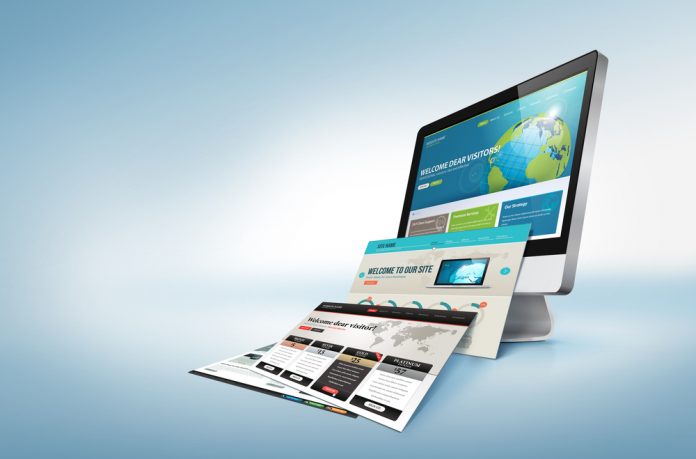As a hotel owner or marketer, you will no doubt be regularly trialling different promotional tactics in order to help your brand stand out amid the millions of other properties out there.
However, what if you are dutifully blogging, tweeting and analysing data, only to find you just aren’t getting the conversions you’re longing for?If you are seeing traffic coming in but people aren’t getting their credit cards out and reserving rooms, it could be that you are making mistakes with your website and putting off potential guests without even realising it. But how do you know if this is the case? Here are a few of the most common errors we see on a regular basis – and some tips on how to avoid committing them.Uninspiring imagery If your hotel website doesn’t have any pictures at all, people are sure to wonder why and whether you’re trying to hide the fact that you don’t have running water or electricity. Joking aside, although most properties will have images of some sort, they can often be uninspiring and appear to be added simply because marketers know they should be there.
Photos are really important when it comes to hotel website design because guests want to know what their rooms will look like before they book. Holidays cost a lot of money and people need to be reassured that they will get what they are envisaging, not something completely different.To make your site really enticing, never use stock photos of your resort – take pictures yourself, or employ a professional if you don’t rate your skills. When it comes to composition, aim to seize people’s imagination by considering your target audience and photographing what you know will appeal to them.
According to TripAdvisor, travellers are 150 per cent more engaged on websites with 20 or more pictures, so they are absolutely essential. Subconscious emotions are one of the most powerful factors in persuasive advertising, so it would be foolish not to capitalise on this by making people daydream about your property using clever pictures. However, don’t be tempted to exaggerate or it may leave guests disappointed when they get there – and never show empty bars or reception areas, as it makes it look as though you’re unpopular and have inattentive staff. A lack of reviews The importance of reviews cannot be underestimated today, as travellers do not simply take the words of brands as gospel – they seek out the thoughts and experiences of their peers.
A recent study by TripAdvisor found that 53 per cent of people will not book a hotel that doesn’t have reviews, while 96 per cent consider them important when planning trips.They should be displayed prominently so that you can show off the excellent stays your past guests have had with you, as this can be a powerful influencer in helping prospective customers to make a decision.However, don’t be tempted to vet them and weed out the negative comments because this can actually have a detrimental impact. People are likely to be suspicious if they see nothing but glowing testimonies. What’s important is how you respond to the not-so-good ones. Some 85 per cent of TripAdvisor users agreed that a thoughtful response to a bad review would improve their impression of the property, so it wouldn’t necessarily result in them not making a booking. What you need to do is ensure good reputation management so would-be guests can see you are on top of any issues.
A website that’s really slow to load You might think that it doesn’t make much difference to your booking rates if it takes a few seconds for your website to pop up after people click through, but you’d be mistaken. According to Kissmetrics, 47 per cent of consumers expect a web page to load in two seconds or less, while 40 per cent will abandon one that takes more than three seconds to load. And since a one-second delay can result in a seven per cent reduction in conversions, you might be losing a significant amount of revenue if you’re making this error.Slow speeds can also have a negative effect on your SEO results, as Google rates load speeds in its algorithms. If your site is slow, it’s vital to take steps to find out why. Perhaps you are using Flash or your pages are full of images that haven’t been compressed? You should also rethink auto-play videos and any music – not only will these slow your site down, but they are also incredibly annoying and likely to be off-putting for your audiences.
Failing to call them to action You might have content regularly published on your site, but if you don’t make a point at the end, you may find that people hit the back button and go off to somewhere else on the internet. Failing to have a call to action is a common mistake, but it could be a costly one. Always put a strong invitation for people to book, subscribe to your newsletters, read past content or visit your social media pages to engage them further. It doesn’t always need to be about browbeating people into booking, though. Consider your audience and make your messages correct for them, rather than focusing on being salesy – this can work the other way and actually be off-putting. Driving people to related content that will interest them should move them through your website and boost engagement with your brand, making them more likely to book in future. Drawn-out booking forms Another common error is presenting booking forms that have endless questions before guests manage to make a reservation. You should aim to collect only the data you really need and then fill in the gaps later if necessary.Asking for everything but their shoe size could result in booking abandonment at the final hurdle, which undoes all your hard work prior to this.
A checkout process that’s too complicated Survey regularly reveal that overly complicated checkouts are among the top reasons for people to ditch their reservations, so if your booking form has ten pages to complete, it may be the main reason why you’re losing out on revenue.Implement a good booking engine with the best-quality software, narrow it down to as few pages as you can and divide the process up into steps so guests know exactly what they need to do via a progress bar. This will really make people’s lives easier and may ensure they go the whole way and book with you.
As you can see, these mistakes are really easy to make – but also very simple to fix, so take a look at your site and see if you can make some amendments.







